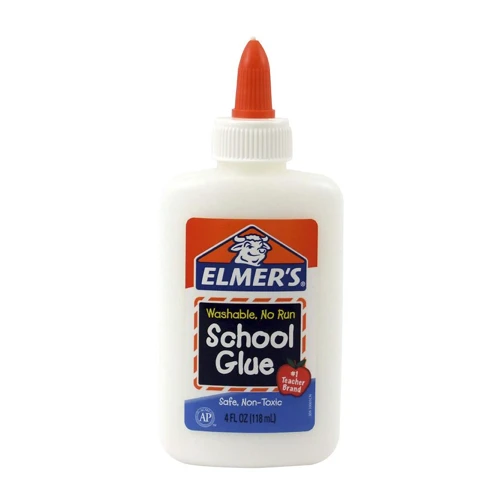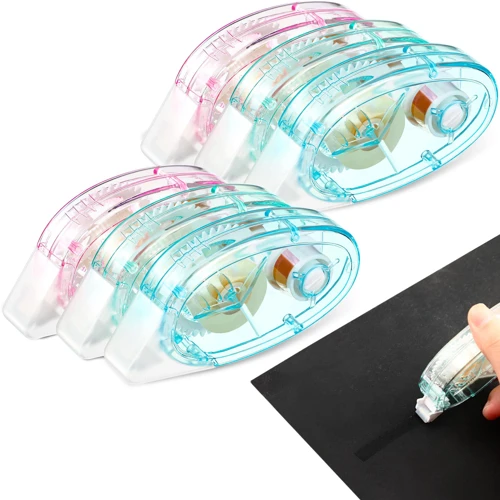When it comes to joining two surfaces together, the debate of glue vs tape is a common one. Both adhesives serve the purpose of bonding materials, but their strengths and application methods vary significantly. Understanding their properties, applications, and limitations is crucial for anyone looking to make an informed decision on which is stronger and more appropriate for their specific needs.
Understanding Adhesives: What Makes Them Sticky
Adhesives are substances that hold materials together by surface attachment, a phenomenon known as adhesion. This stickiness is a result of molecular forces that occur between the adhesive and the material it’s being applied to. These forces can be mechanical, chemical, or a combination of both. The strength and permanence of the bond depend on how well the adhesive can resist separation, which is influenced by the specific formula and characteristics of the adhesive used.
How Is Tape Sticky: The Science Behind Adhesion
The adhesive on tape is designed to be pressure-sensitive, meaning it bonds when pressure is applied. This form of adhesion involves a viscoelastic substance that behaves both as a liquid and a solid, adhering to a surface without the need for water, solvent, or heat to activate it. The strength and durability of the bond are determined by the properties of the tape’s adhesive, the surfaces being bonded, and the environment in which it is applied.
Which Is Stronger: Glue or Tape?
The question of which is stronger, glue or tape, is not easily answered as it largely depends on the materials involved, the conditions of their application, and the duration of the required bond. Each has its robust options designed for heavy-duty tasks. Let’s delve into some of the strongest contenders in both categories.
The Strongest Tape Options Available
The market offers a variety of tapes known for their exceptional strength. For example, reinforced filament tape is used in packaging for its high tensile strength, while gorilla tape is revered for its grip and durability even on rough surfaces. However, the strongest tape is often considered to be mounting tape, designed to replace nails and screws for heavy-duty holding tasks.
Hot Glue vs Wood Glue: A Strength Showdown
When comparing hot glue vs wood glue, it’s important to consider the materials involved. Hot glue, applied with a glue gun, is known for its quick setting time and versatility. In contrast, wood glue penetrates the wood fibers and creates a bond stronger than the wood itself when fully cured. For woodworking projects, wood glue is typically the stronger choice.
Is Duct Tape or Electrical Tape Stronger?
Choosing between duct tape and electrical tape comes down to the application. Duct tape is recognized for its robust adhesive quality and high tensile strength, making it a strong all-purpose tape. On the other hand, electrical tape is designed to insulate and resist heat, not necessarily to hold heavy loads. Therefore, for general bonding purposes, duct tape would be the stronger option.
Application Methods: Tape vs Glue
Understanding the application methods of tape and glue is essential when deciding between the two. Each method has its set of advantages and disadvantages, which can influence the overall strength and effectiveness of the bond.
Advantages of Using Tape
- Immediate bonding without the need for curing time
- Can be repositioned or removed with minimal residue
- Ease of application and no requirement for additional tools
Disadvantages of Using Tape
- May lose adhesion over time or under high temperatures
- Not suitable for all surface types, especially porous or uneven ones
- Visibility of the tape may not be aesthetically pleasing
Advantages of Using Glue
- Strong, permanent bond, especially with porous materials
- Invisible finish for a more professional look
- Variety of formulas available for different materials and conditions
Disadvantages of Using Glue
- Requires curing time, which can slow down the process
- Application can be messy and may require cleanup
- Difficult to reposition once the glue has set
Specific Use Cases and Recommendations
Selecting the right adhesive depends on the particular use case. Certain applications may benefit more from tape, while others might require the strength and permanence of glue. Let’s explore some specific scenarios where one may be favored over the other.
Disadvantages of Double Sided Tape in Certain Applications
Double sided tape offers the convenience of sticking two surfaces together without visible seams. However, its disadvantages come to the forefront in scenarios where a permanent, strong bond is required. It may not hold up well under heavy loads or in high-temperature environments, and it can be difficult to apply evenly on irregular surfaces.
Choosing Between Hot Glue and Wood Glue for Woodworking Projects
For woodworking projects, the choice between hot glue and wood glue is clear. Wood glue should be used for joints that need to withstand stress and have a seamless appearance. Hot glue can be used for temporary holds during assembly, but for a long-lasting wood bond, wood glue is unmatched.
When it comes to holding things together, the choice between glue and tape can be crucial depending on the task at hand. For those who are curious about the effectiveness of various adhesives, we delve into the strengths and weaknesses of different products. For instance, if you’re considering eyelash enhancements, you may find it helpful to compare glue or magnetic eyelashes to see which option might work best for your beauty routine. Likewise, in the realm of heavy-duty adhesives, you might wonder which is better: Flex Seal or Gorilla Glue? For a more in-depth look at the capabilities of one of these products, don’t miss our article on how strong Flex Glue is and whether it’s the right choice for your next project. Each adhesive has unique properties that can make it more suitable for certain applications, and understanding these can help you make the best choice for your needs.
Conclusion: Making the Right Choice for Your Needs
In the battle of which is stronger, glue or tape, the answer is nuanced. It hinges on the specific requirements of the task at hand. For quick fixes and temporary bonds, tape may be the winner due to its ease of use. However, for durable, long-lasting applications, glue typically offers a stronger bond. Assessing the surface materials, environmental conditions, and strength requirements will guide you to the most suitable adhesive choice, ensuring a secure and lasting bond for your projects.

